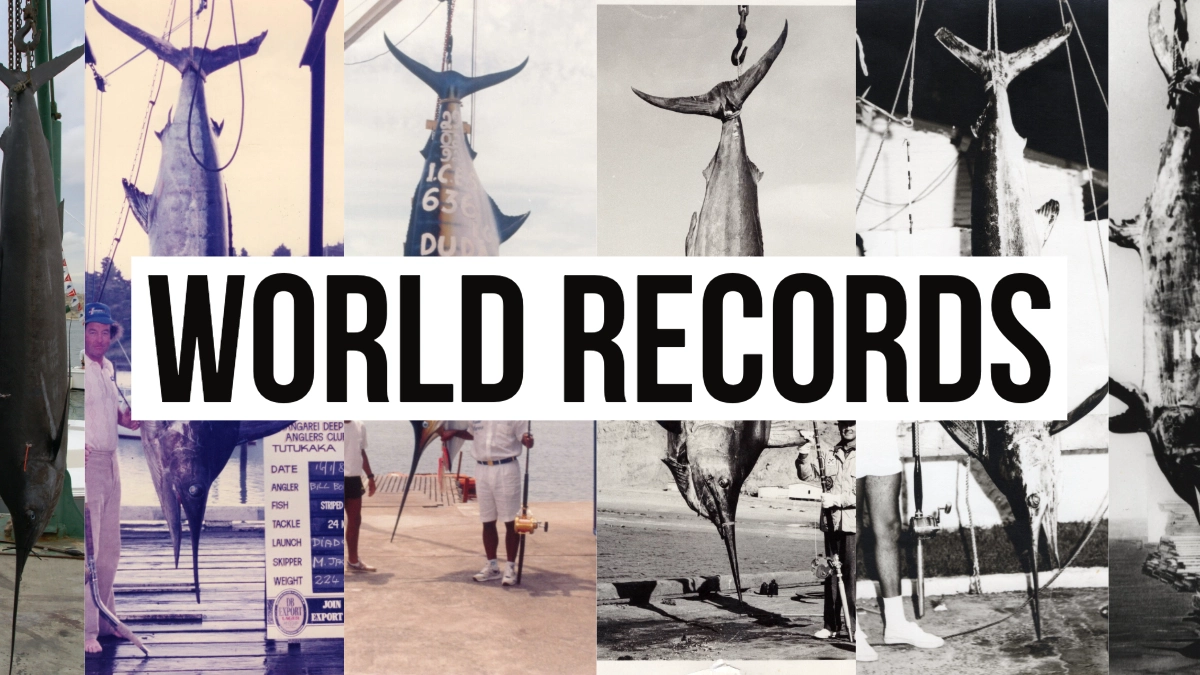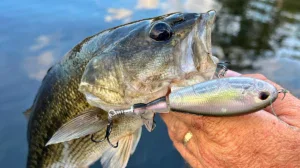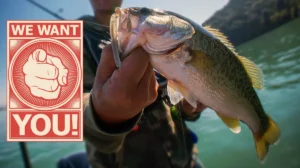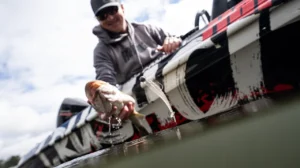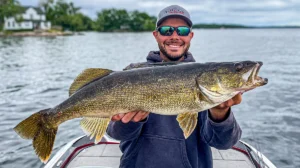The pursuit of world record billfish represents the ultimate challenge in big-game fishing, with some offshore anglers chasing the hallowed mark of a “grander”—a marlin weighing over 1,000 pounds. Below, we highlighted the largest billfish species ever caught and recorded with the International Game Fish Association (IGFA). These jaw-dropping catches, often achieved in battles lasting hours, test the limits of both angler and gear, solidifying the billfish as the heavyweight champion of saltwater sportfishing. (Yes, bluefin tuna might have something to say about that.)
BLACK MARLIN (Istiompax indica)
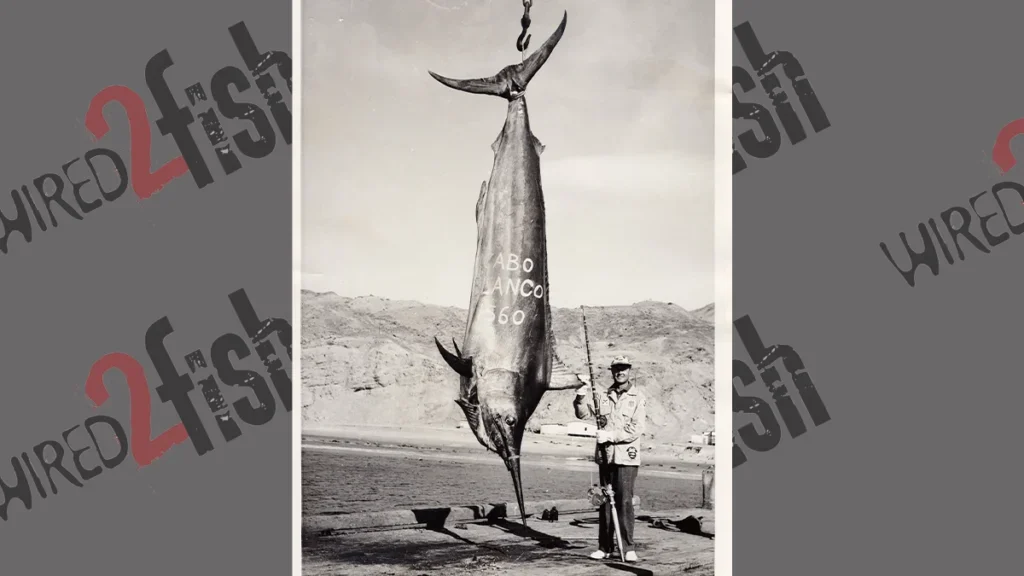
- 1,560 pounds
- Cabo Blanco, Peru
- August 1953
- Alfred Glassell, Jr.
- Trolling a mackerel on 39-thread linen line (approx 65-pound test)
The black marlin inhabits tropical Pacific and Indian oceans; a very limited number round the Cape of Good Hope into the Atlantic. Identification: Only marlin species with rigid pectoral fins that can’t be folded flat against the body. Also, short ventral fins and low dorsal fin (extending above body less than half the body depth). Its body is more laterally compressed than the similar and more round-bodied blue marlin.
The truly extraordinary circumstances of this world-record catch are chronicled in an article entitled, “Cabo Blanco, The Rise and Fall of the Greatest Bluewater Big-Game Fishing the World Has Ever Known,” in the 2005 International Game Fish Association World Record Book that details the many world records set at Cabo Blanco in the 1950s. This catch was made far off the cape, the marlin clearing the water 49 times over nearly two hours.
BLUE MARLIN (Makaira nigricans)

ATLANTIC
- 1,402 pounds
- Vitoria, Brazil
- February 1992
- Paulo Amorim
- Trolling a Moldcraft lure on 80-pound mono
PACIFIC
- 1,376 pounds
- Kona, Hawaii
- May 1982
- Jay de Beaubien
- Trolling a Kita lure on 130-pound mono
Blue marlin are found in tropical and warm-temperate waters of Atlantic and Pacific oceans. Unlike the black, the blue marlin’s pec fins aren’t rigid and can fold flat against the body. Both dorsal fins are considerably higher than in the black, and more pointed. Both blues and blacks over 500 pounds are almost always female.
Some taxonomists in the past considered Atlantic blues and Pacific/Indian Ocean blues as separate species, but they’re widely considered the same species now. However, the IGFA still maintains separate records, depending on where caught.
STRIPED MARLIN (Kajikia audax)
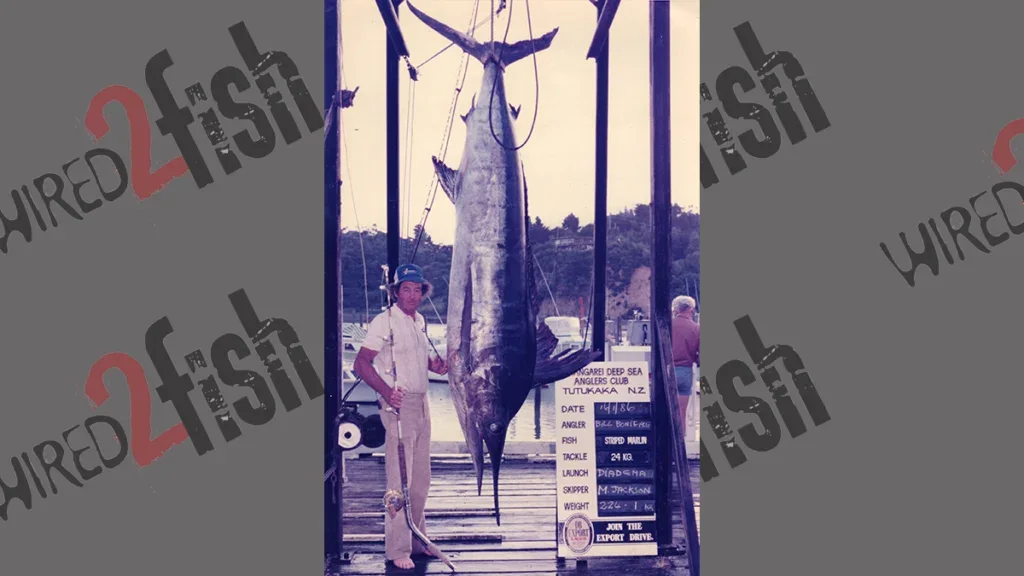
- 494 pounds
- Tutukaka, New Zealand
- January 1986
- Bill Boniface
- Trolling bait (a kahawai) on 50-pound mono
Although they’re widely dispersed in warm-temperate and tropical waters of the Pacific and Indian oceans, the neighborhood for giant stripes is the waters of northern New Zealand: Of the 15 stripes over 300 pounds that fill IGFA line-class records, all but one were taken there.
Striped marlin are notable for their high dorsals, the height nearly equaling or exceeding the greatest body depth. The striped pattern on the sides of the compressed body may be barely discernible but are often vivid, particularly when “lit up” and fins become purple.
WHITE MARLIN (Kajikia albida)
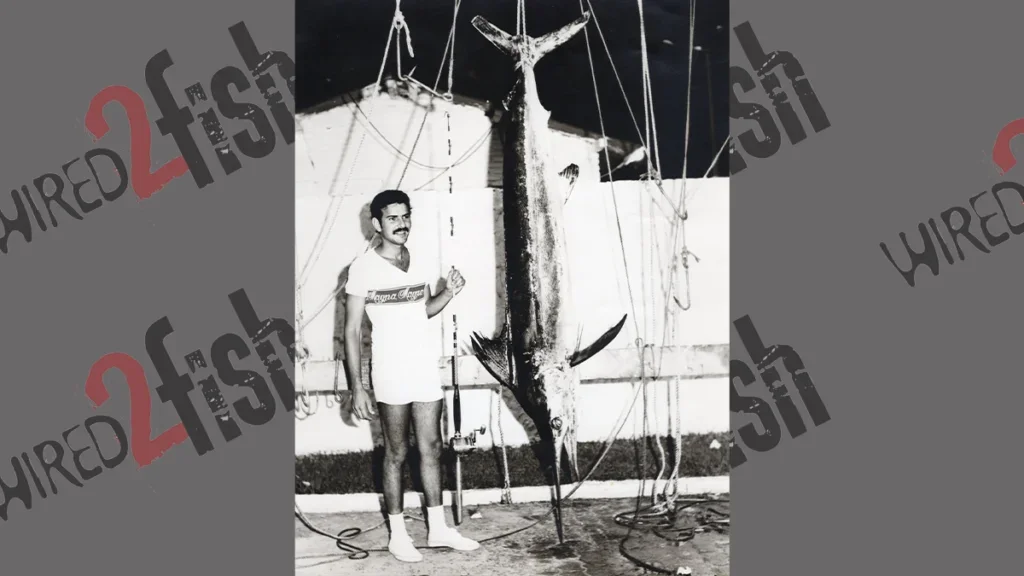
- 181 pounds, 14 ounces
- Vitoria, Brazil
- December 1979
- Evando Coser
- Trolling bait (unspecified)
Found in warm-temperate and tropical Atlantic including the Gulf and Caribbean, and western Mediterranean, the white is distinguished by the rounded dorsal, pectoral and (most reliably) the anal fins. Lighter in color than other marlin, the lateral line is clearly visible.
SPEARFISHES (Tetrapturus spp)
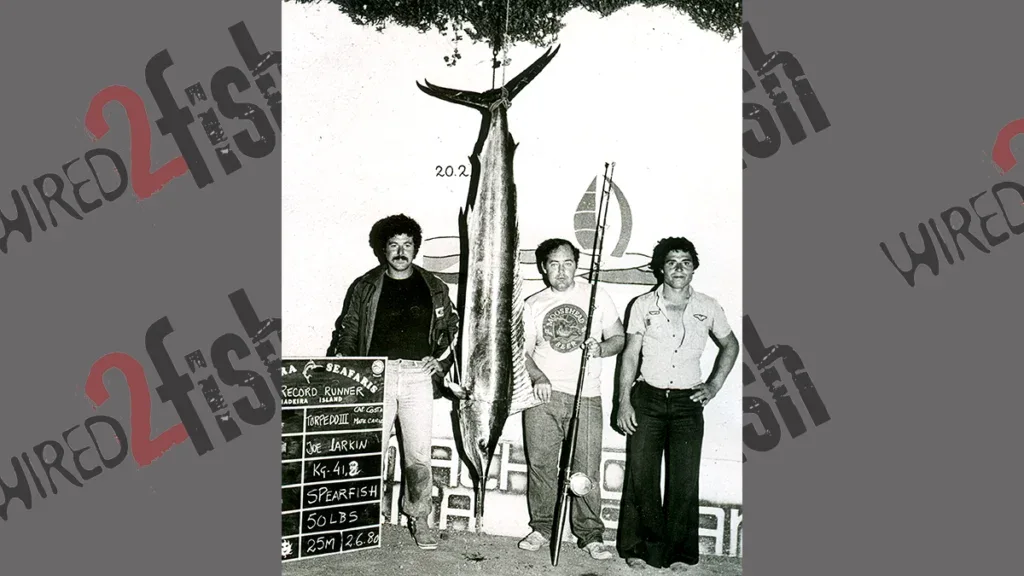
While spearfishes are found in tropical and temperate blue waters around the world, these long, slender billfish are abundant nowhere. Far smaller than marlin species, the largest species, the longbill, may exceed 100 pounds, though other species seldom exceed 60 or 70 pounds. The long first dorsal fin of spearfishes extends most of the length of their body.
LONGBILL SPEARFISH (T. pfluegeri)
- 127 pounds, 13 ounces
- Canary Islands
- May 1999
- Paul Cashmore
- Trolling a Yo-Zuri lure on 30-pound mono
Found in much of the Atlantic Ocean, largest of the four spearfishes. As its name suggests, the longbill has the longest bill of the four species, about twice the length of its lower jaw.
MEDITERRANEAN SPEARFISH (T. belone)
- 90 pounds, 13 ounces
- Madeira
- June 1980
- Joseph Larkin
- Drifting bait on 50-pound Ashaway line
True to its name, T. belone is found in the Mediterranean. Intermediate bill length.
ROUNDSCALE SPEARFISH (T. georgii)
- 70 pounds
- Baltimore Canyon (off Maryland)
- August 2010
- Andres Fanjul
- Trolling a ballyhoo on 30-pound line
Found in the Atlantic, including the Mediterranean. Intermediate bill length. In the past, often mistaken for white marlin; genetic analysis in 2006 clarified its species status as a separate species.
SHORTBILL SPEARFISH (T. angustirostris)
- 110 pounds, 3 ounces
- Botany Bay, Australia
- May 2008
- Edward Tolfree
- Trolling a Pakula lure on 30-pound mono
Although a few have been captured in the Atlantic, the shortbill is a fish of the Pacific and Indian oceans. The name is fitting: the species’ bill barely extends forward of its lower jaw.
SAILFISH (Istiophorus platypterus)
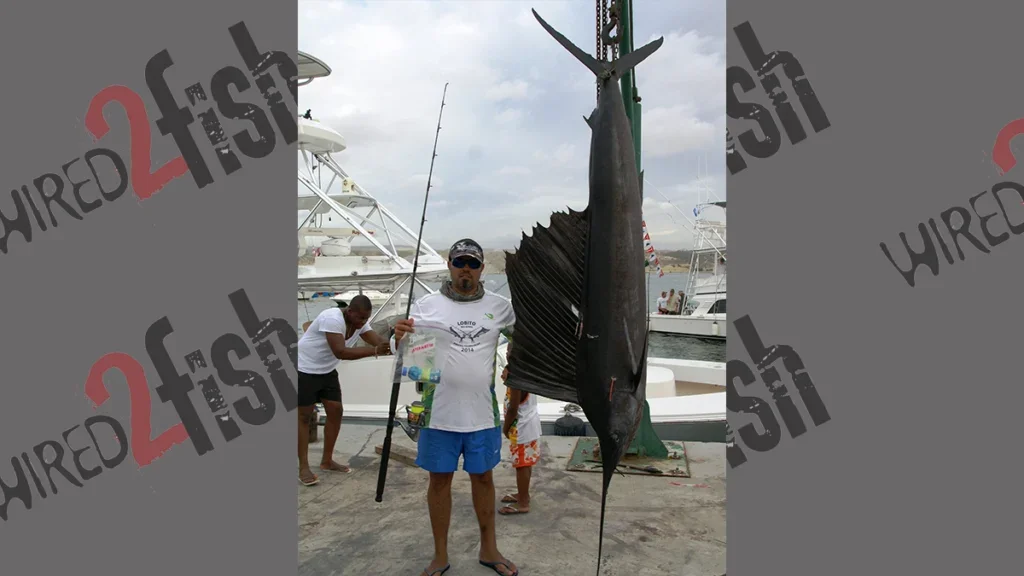
ATLANTIC
- 142 pounds, 6 ounces
- Angola
- March 2014
- Marco Couto
- Trolling a ballyhoo on 30-pound mono
PACIFIC
- 221 pounds
- Ecuador
- February 1947
- Carl Stewart
- Fishing (technique not specified) a mullet on 130-pound line
Found in all tropical and subtropical seas, sailfish favor coastal areas in water shallower than blue or white marlin. The large, high sail-like first dorsal makes it unmistakable, its bill clearly longer than the spearfishes. There is but one species; however, the IGFA keeps separate records for those caught in the Atlantic and Pacific/Indian oceans, with the latter averaging a larger size.
SWORDFISH (Xiphias gladius)
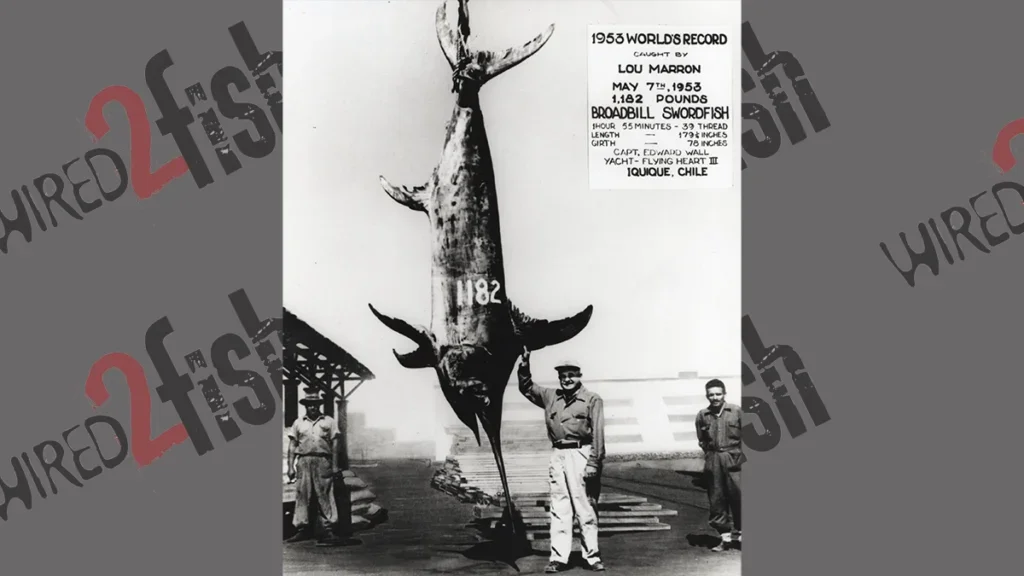
- 1,182 pounds
- Iquique, Chile
- May 1953
- Louis Marron
- Trolling a bonito on 39-thread linen line
While the marlins, spearfishes and sailfish are all in the same family, (Istiophoridae), one noticeable species isn’t: the swordfish. The single species comprises the family Xiphiidae. Though they do sport a bill, that very long, flat, sword-like structure bears little resemblance to the tapered, round snouts of marlins. They’re found around the globe in temperate and cold oceans, often below 1,000 feet in the deep-scattering layer though often rising to or near the surface to feed at night.
Days of “Dead Hangers” are Gone
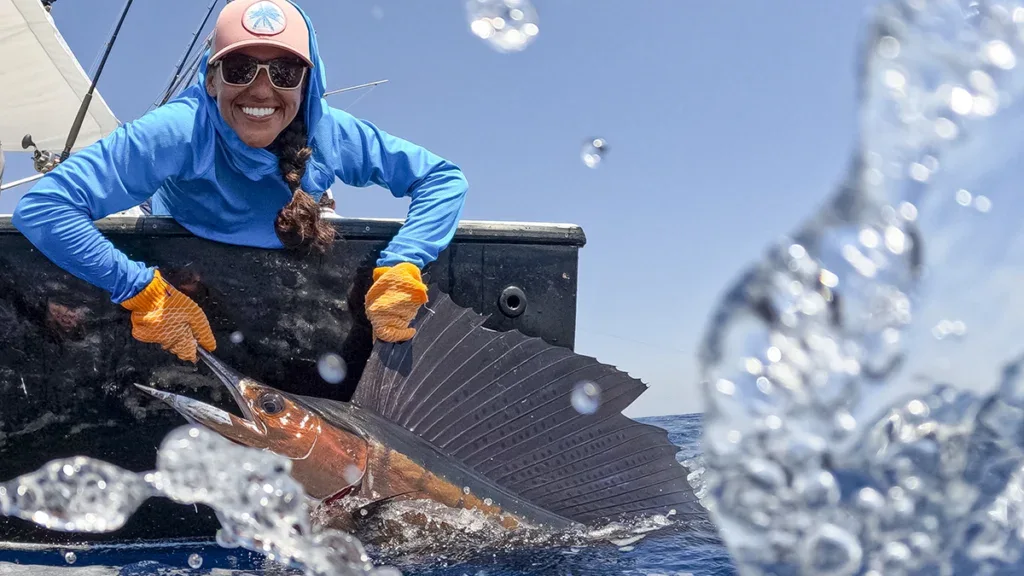
Many of the billfish shown hanging from cranes or scales in these photos were caught before today’s release ethic had become so prevalent among offshore anglers. These days, thankfully few anglers care to kill billfish simply for a weight and bragging photos — though the belief that a fish could weigh enough to be a new world record could be that very rare reasonable justification for many anglers.
At the same time, the technology and durability of cameras make on-the-water shots worth sharing. More and more big-game tournaments are progressive enough to set high weight minimums, but many are also release-fishing only. A marlin hanging dead back at a dock just to get the weight measurement and photos plays into the hands of anti-fishing forces, showing the public a dark side of our sport that serves no one.
